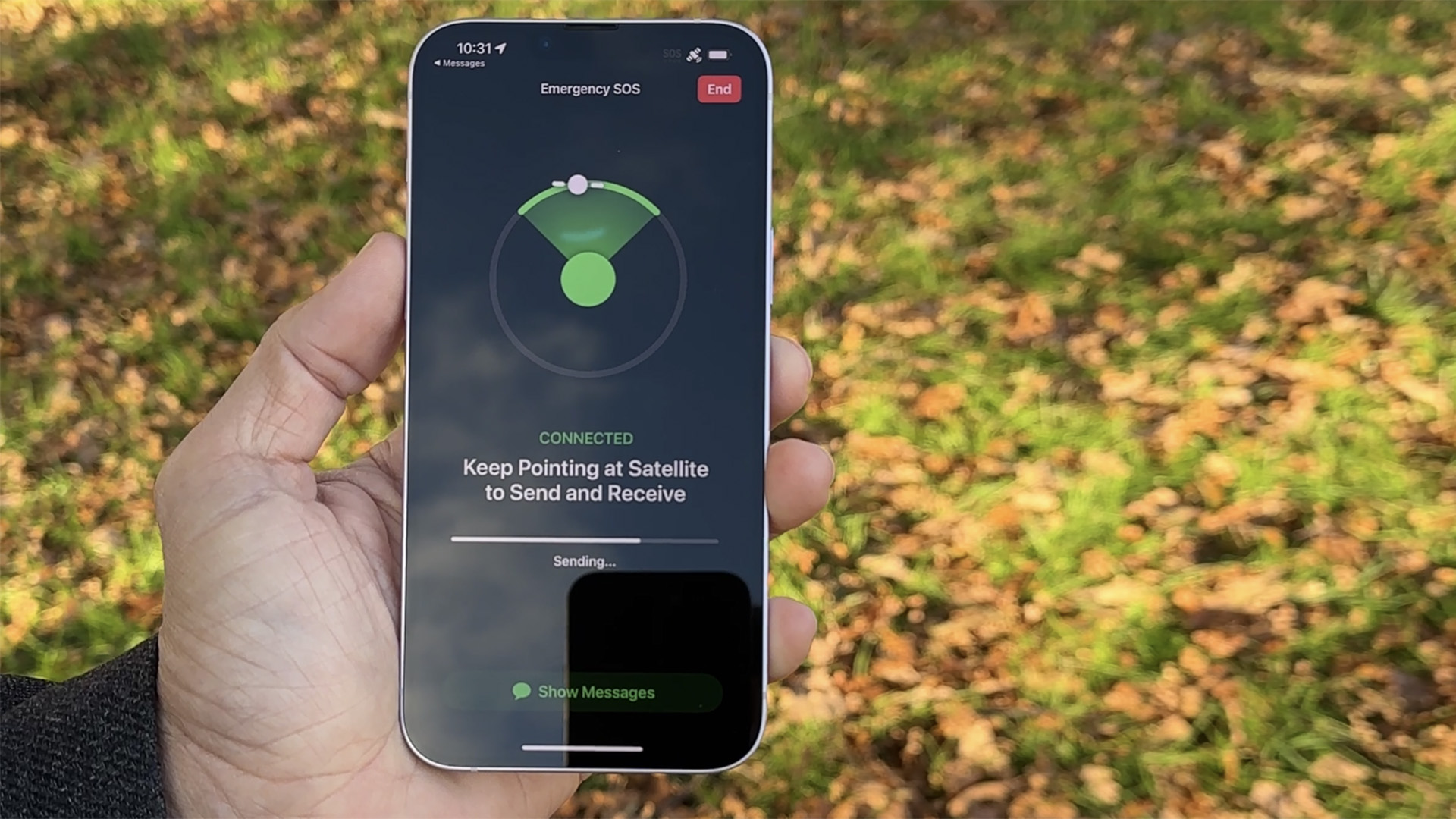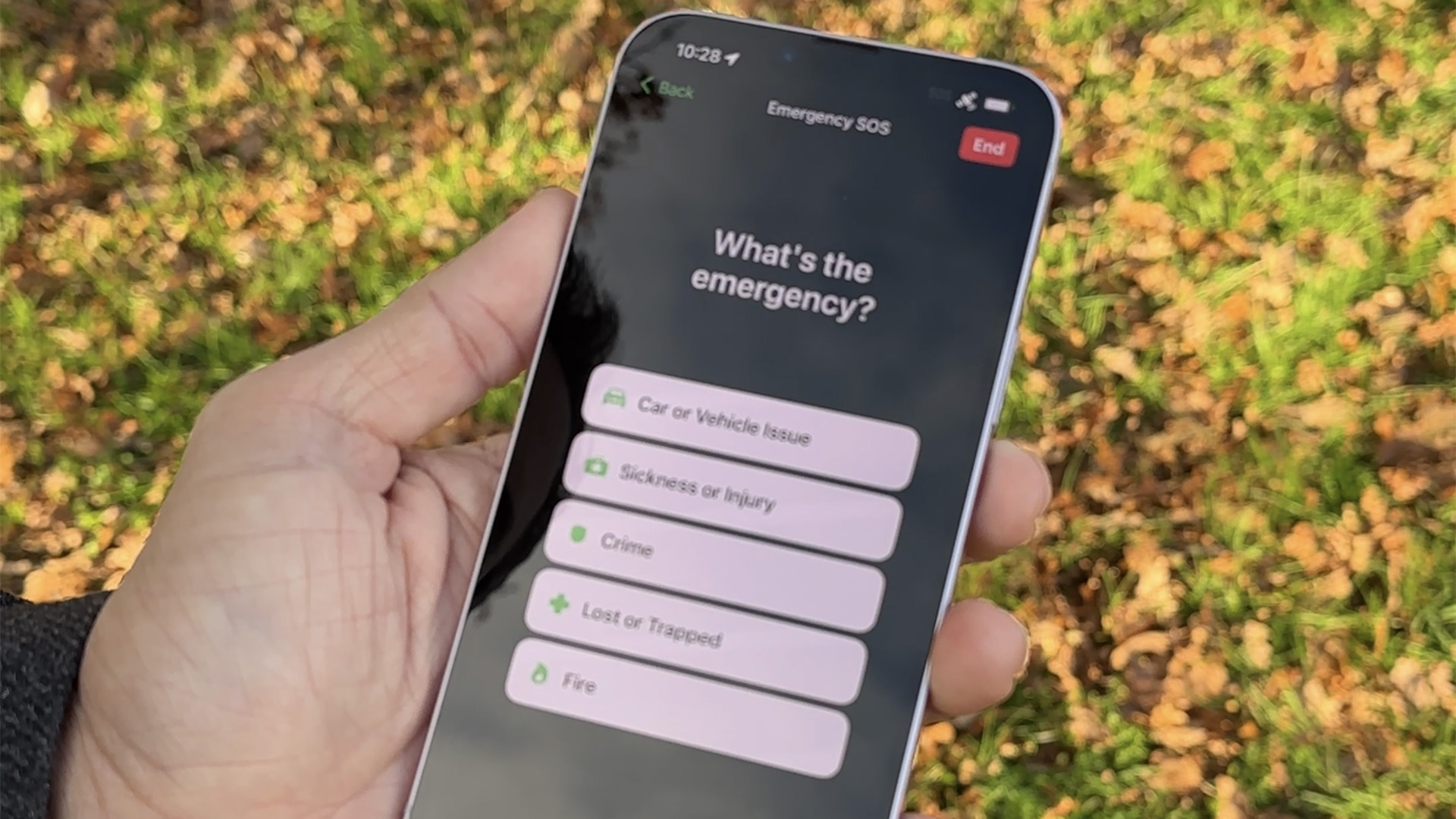

The iPhone 14 models all feature the ability to connect to satellites for emergency response. It’s a technology that has previously been limited to expensive satellite phones, used by those travelling off-grid and can literally be the difference between life and death in certain situations.
While satellite connectivity can’t be used for regular calls, it can broadcast a series of text messages and location information to emergency services. This means that if you need rescuing, you can let people know, and be found.
The feature is available in every iPhone 14 model, including the iPhone 14 Plus, Pro and iPhone 14 Pro Max. It has been active in the US and Canada for a few weeks but from today it’s also available for use in the UK, France, Germany and Ireland.
The service will automatically activate when trying to call the emergency number (999 or 112) when out of signal. The iPhone is able to access any network for emergency calls (regardless of your network provider) but if none of them are available, it will now switch to satellite.
The service will ask you a short series of questions to determine the type of emergency. It then sends this information in a highly compressed text message along with your saved medical ID and current location to a dedicated Apple relay centre which will then call the emergency services on your behalf. These relay centres provide a necessary mediator, as the emergency call centres are unable to receive data in text form.
To send the message you need to keep your phone pointed in the direction of the satellite, with help from a graphic that tells you when it’s in the right zone – much like the FindMy function. Messages are broken up into smaller sections so that, if the signal is lost, it doesn’t need to resend the full message – just the section remaining.
Of course, it’s impossible to try this out properly without being completely out of cell tower range and without reporting a fake emergency but you can now try a demo of the service, which can be found under the Emergency SOS menu in Settings. This will allow you to test the satellite connectivity and see an example of the questions and the interface.
Get all the latest news, reviews, deals and buying guides on gorgeous tech, home and active products from the T3 experts
If you have an emergency contact saved on your phone, that person will also receive a transcription of your interaction with the emergency service and your current location. This lets them know where you are and that you are receiving help without you needing to contact them separately.

There’s another use for the iPhone’s satellite communication, which is a little less serious, but just as useful. When out of signal, the iPhone 14 models can use the satellite to help you share your location with those on your Find My list. This means that if you’re on a hike, at a festival or off the grid, you can share where you are and help others locate you.
The new satellite functionality will be available free of charge to all iPhone 14 users (including Plus and Pro versions) for two years from activation. After two years, there could be a charge introduced, however pricing has not been confirmed at this stage.

I tried the emergency SOS by satellite service under controlled conditions last week – to avoid causing a false alarm. When you first try and call 999 it takes a few seconds to confirm that there is no signal available, as it scans for other networks. Then the satellite options become available. The questions are clear, asking for the type of emergency, who needs help and then a couple of follow-up questions, including the choice to notify your emergency contact. Once the satellite graphic comes up, you need to turn yourself around until it sits within the green zone – there’s a haptic vibration as it comes in range – this is all about direction not the height of your phone. You then move to a messaging screen and watch the progress bar sending your message.
Sending a message via satellite isn’t quick, even in a relatively clear location, it can take 10 seconds or more to send. If you’re in a forest or covered area, you could be looking at it taking much longer. The process is really clear and simple though, and having the whole transcript also sent to your contact is a nice touch.
I’d certainly recommend trying the demo on your phone, as you’ll get a better idea of how the process works. After all, you never know when you might need it.

As T3's Editor-in-Chief, Mat Gallagher has his finger on the pulse for the latest advances in technology. He has written about technology since 2003 and after stints in Beijing, Hong Kong and Chicago is now based in the UK. He’s a true lover of gadgets, but especially anything that involves cameras, Apple, electric cars, musical instruments or travel.